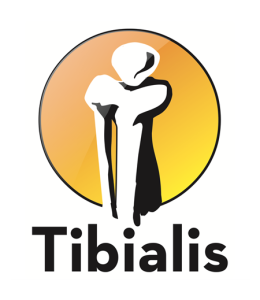Panic Attack
Subconscious Stress and the Autonomic Nervous System
He said, “Hi,” and then laughed. What did he mean by that? That wasn’t a normal laugh. He whispered something to his friend. Why can’t I hear what he’s saying? The whooshing of ocean waves breaking on the rocks clogs my ears. I squint to see who he is talking to. My vision is throttled by a strobing white light. I can’t breathe! My chest is pounding. I’m shaking. The ground is spinning. The world is closing in. I’m getting smaller. I know they are laughing at me. I’m thirsty and sick to my stomach. Why am I sweating? Nobody will catch me if I faint. My feet can’t find the ground. Why do they all hate me? Their mean thoughts sting like shooting arrows. Stop screaming! Every word you say hurts my head.
A panic attack or an anxiety episode can come out of nowhere and escalate to a point of losing control over a conscious state of mind. The physical reactions in the body are driven by stress in the same way that touching a hot stove sends a danger signal to the body. The sensory nervous system perceives the threat and begins to mobilize energy to manage the emergency.
You can stop the dramatic build up of the physical response to stress with fast-twitch muscle movement. Just one minute of an interval type activity, such as running in place, can reestablish conscious control of the physical body by quickly using the energy that stress is trying to stockpile. Motor neurons in movement tell sensory neurons what to do and can override a subconscious sensory neuron storm.
Gaining this kind of control -and ultimately calm- begins with understanding the dance playing out within our bodies. Fast-twitch motor neurons from the central nervous system (CNS) activate muscles along the line of a motor nerve. Tendons stretch and tell sensory neurons in the peripheral nervous system (PNS) to engage the fascia and hold our posture, muscle tone, and location in space relative to gravity.
Both the sympathetic (fight or flight) and parasympathetic (calm down) functions flow through these same fascia pathways in the PNS as an intricate web of yin and yang forces striving for balance in response to many types of internal and external stimuli reaching out to the sensory neurons. The beating of the heart and breathing are controlled in the autonomic nervous system, but our interpretations of how we respond to stress, which are driven by the sympathetic and parasympathetic nervous systems, may be more controllable, and less autonomic, than we think.
Conscious Influence to Manage Physical Stress
Unconscious reactions tend to take the lead in many situations. But what if we looked to the subconscious, by way of the conscious, to actually control stress behavior? The subconscious is a very good listener, and it is acutely aware of the surroundings. It gives us “gut feelings” about danger, the wonderful memories of smells, but sometimes applies erroneous filters to innocent comments made by others, which can spiral in the brain.
The conscious mind can influence the subconscious aspect of the autonomic nervous system to reduce physical stress symptoms to stop the downward spiral. The subconscious connectivity to waves of life and memories sends information back and forth to the brain through sensory neurons in the PNS.
The CNS motor neurons direct movement. The action signals will be heard by the sensory neurons, and the subconscious will listen to the needs of the conscious over the noise of the unconscious screaming in the PNS. The negative messaging to the fight- or- flight system is mitigated, and the fuel already being mobilized will be harnessed by muscles before stress can get entrenched in survival mode. Essentially, this is how exercise burns stress energy.
Taking Action
A long-term barrage of subconscious stress can lead to a vicious cycle of growing overreaction to literally almost anything. Stress is in direct competition with muscle movement for energy resources, and it tries to lock out the fast-twitch muscle power to deploy the body’s resources for the perceived emergency status. Fast-twitch muscle contractions can break through the lock- out and reestablish a calmer and more normal fuel burn pattern that doesn’t need the high-stress sugar mode to survive.
Using the conscious mind to activate fast-twitch muscles at the onset of anxiety triggers can decrease the intensity of stress. The central nervous system must insist on being heard by the peripheral nervous system. A small amount of intentional muscle activation can reroute the impending doom of our thoughts, a little at a time, to help overcome the constant feeling of hopelessness.
Becoming aware that the anxiety is starting is a good first step. Sometimes the fear of the anxiety itself becomes the driving force of stress. Positive thoughts can stop the progression of fear in its tracks. And taking a deep breath activates breathing muscles and encourages the vagus nerve to assess and remedy the situation.
One minute of fast-twitch muscle actions, which is popular in interval training and might involve shadow boxing, running in place, push-ups, lunges, climbing stairs, or Olympic weight lifting, can shift the focus away from subconscious fear back to conscious control
Tai chi, yoga, pilates, dancing, walking, running, in good muscular form, can restore core balance between muscles and posture. Setting fun goals for reps within a minute or counting the number of seconds needed to identify pending anxiety can bring the active brain back into play. Signals from the subconscious can be reviewed rationally in meditation and prayer. There are many types of professionals who can help with overall stress management. Regaining physical presence can bring an awareness that allows for asking for productive help.
The one-minute exercise can also be done lying face up or seated in a chair if there are balance issues or if you feel faint. The posture system from the PNS isn’t needed as much in those positions, so it’s easier to activate motor neuron muscle contractions. A bridge exercise on your back or a plank on your stomach uses large muscle group motor neurons in the lower body to counter a stress attack. Friends can help each other by encouraging fast-twitch muscle activity during stressful episodes.
Light muscle activation and stretching of tight areas before or in bed can train body awareness in a semi-conscious state. Setting peaceful sleep and dream intentions can be done during deep-breathing exercises. Expanding the diaphragm is a gateway to the vagus nerve, allowing for calm, autonomous breathing for deep sleep, and taking pressure away from the overworked stress breathing muscles in the neck.
Information flows back and forth from the conscious to the subconscious looking for a level of homeostasis. Both states of being can coexist, working toward harmony for a calmer, healthier life.
Author: Mary Bai of Tibialis, LLC is a Certified Massage Therapist practicing Medical Massage in Redwood City, CA.
Contact: mary@tibialis.com

